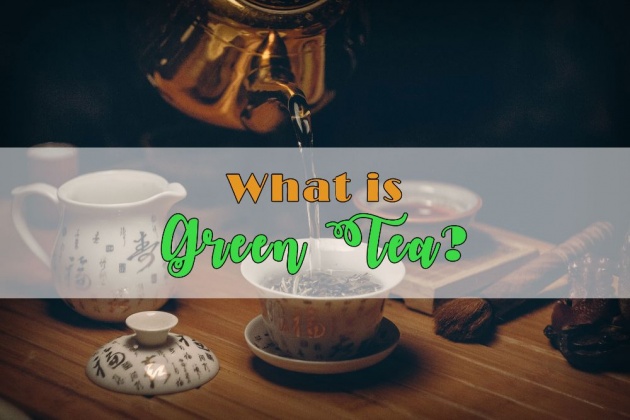
Image Credit: Pexels via Pixabay
So, I've been posting about a series of blog about tea. If you're a green tea lover, then you are already quite familiar with its health benefits, as well as its possible side-effects. However, if you're still new to drinking green tea, this post is for you. Let's go over what exactly green tea is and how it can help your health. We will also go over how many cups of green tea is recommended.
What is Green Tea?
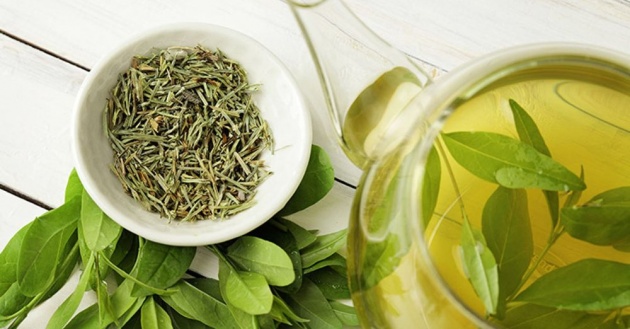
image Credit: http://www.joekels.co.za/
Green tea is a type of tea derived from the plant Camellia Sinensis. Some people are surprised to learn that other types of tea, such as black, white, yellow, and oolong tea, come from the same plant. The only difference between these types of teas is how they are processed.
Green tea has long been recognized as a drink with many health benefits and is a staple in many tea drinking ceremonies in both Japan and China.
In this modern day and age, green tea continues to be an all-star ingredient in many supplements and other products.
Varieties of Tea Plant
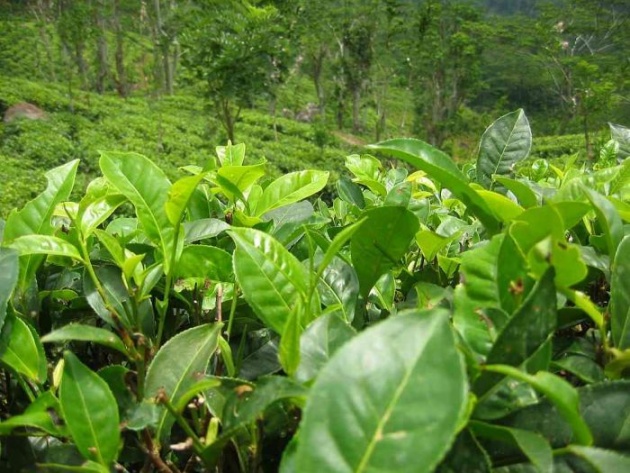
Image Credit: https://www.asklepios-seeds.de/
Green tea is produced from the tea plant Camellia Sinensis--we already know that much. However, did you know that there are two main varieties of the Camellia Sinensis tea plant? These are the Camellia Sinensis Sinensis and Camellia Sinensis Assamica.
Camellia Sinensis Sinensis
This variety of Camellia Sinensis has a smaller leaf which is native to China. It is typically used to make green and white tea. It has a high tolerance against cold and thrives in sunny regions with cooler and drier climates such as the mountains.
Camellia Sinensis Assamica
The leaf of this tea plant variety is much larger than the ones found in China. Camellia Sinensis Assamica was first discovered in the Assam district of India, hence the name Assamica. This is typically used to produce strong black tea. This tea plant variety thrives in warm and moist climates which is why it grows prolifically in sub-tropical forests.
Green Tea Nutrition Facts
Brewed green tea is mainly water-based, meaning it is free from the usual macronutrients found in other foods and beverages, such as fat, protein, and carbohydrates. Calories are also absent from this drink as long as it is unsweetened.
On the other hand, it contains compounds that make it a healthy drink such as catechins, specifically epicatechin, epicatechin-3-gallate, epigallocatechin, and EGCg. Furthermore, these catechins are also believed to be what gives green tea its antioxidant, probiotic, cancer-fighting, and metabolism boosting benefits. It also contains trace amounts of potassium and moderate levels of caffeine--unless you opt for a caffeine-free variety. A cup of green tea normally contains 25 to 29 milligrams of caffeine. Caffeine has always had a bad reputation but it's not really all bad. When consumed moderately, it actually has many health benefits. In comparison, green has lower caffeine content than black tea and coffee.
Types of Green Tea
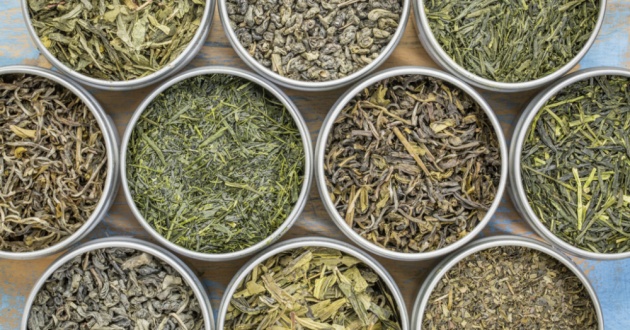
Image Credit: https://bigflagtea.com/
Green tea is just one type of tea derived from the Camellia Sinensis tea plant. But, did you know that there are still different varieties of green tea? The different varieties of green tea differ due to several factors such as the location (and its climate) where it is grown, how it was cultivated, and the slight differences in how it was processed. Here are some popular types of green tea from China and Japan.
Green tea from China (pan-fried)

Image Credit: https://www.amazon.ca/
- Gunpowder
- Long Jing (Dragonwell)
- Pi Lo Chun (Green sail Spring)
- Snowy Mountain Jian
- Hyson Lucky Dragon
Green tea from Japan (steamed)
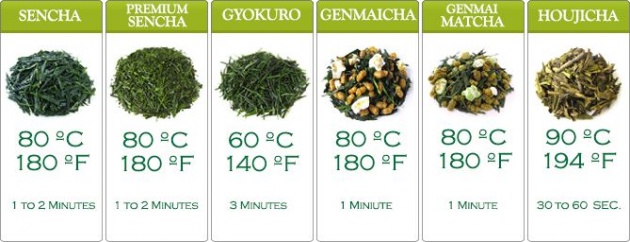
Image Credit: https://www.japaneseteafarm.com/
- Gyokuro
- Sencha
- Bancha
- Matcha
- Houijicha
- Kukicha
- Genmaicha
You can read the difference between some of these different green tea from Japan in greater detail here.
How is Green Tea Processed?
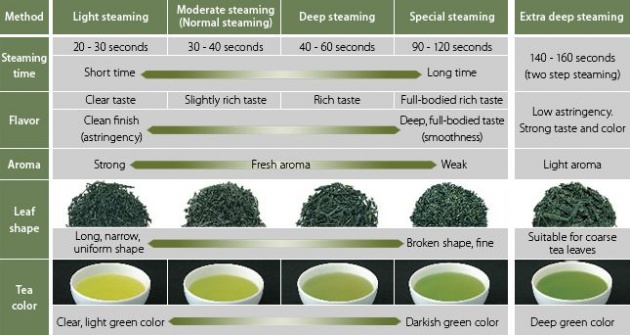
Image Credit: http://www.itoen-global.com/
Green tea leaves are harvested from the tea plant called Camellia Sinensis. The harvested leaves are then quickly heated--either by pan-frying or steaming--and then dried to help prevent it from oxidizing too much. This process turns the leaves to brown and alters the flavor.
A brewed tea normally has a green, light brown, or yellow color. Its flavor profile can range from vegetal sweet, grass-like and toasted if its pan-fried, and seaweed-like if it's steamed. Green tea should have a light color and only mildly astringent if brewed correctly.
In contrast, black tea has an amber, red, or dark brown color when brewed. Its taste profile also varies depending on how it was processed. In general, black tea is more bitter and astringent than green tea.
Another key difference between green tea and black tea is that black tea is allowed to fully oxidize before they are heated and dried.
This process turns the leaves dark brown to black color which this tea variety is famous for.
If you're still curious about black tea and how it differs from green tea, here's a video from the ActiveBeat YouTube channel citing the key differences between the two.
Video Credit: ActiveBeat via YouTube
Health Benefits of Green Tea

Image Credit: https://www.lybrate.com/
Green tea is a treasure trove of health benefits, especially matcha green tea. Here are just some of the benefits you get from regular consumption of green tea.
- High antioxidant content
- Better heart health
- Improves mental focus
- Boosts the immune system
- Promotes weight loss
- Helps detoxify the body
- Improves memory
You can read more in detail about the health benefits of matcha green tea here.
Side-Effects of Green Tea

Image Credit: https://askopinion.com/
Green tea is generally good for our health. However, there are some potential side-effects you may want to watch out for. Some of these negative effects include the following.
- Headache
- Upset stomach
- Iron deficiency and anemia
- Sleeping problems
- Convulsion and dizziness
- Vomiting
- Bleeding disorders
- Liver disease
- Bone disease
- High blood pressure and irregular heartbeat
Some of the mentioned side-effects above are quite rare while most of them can be experienced if you consume too much.
Final Thoughts
Remember, anything in excess is bad for you. These risks of drinking too much green tea can be avoided with moderate consumption. As a rule, you can drink 4 to 5 cups a day if you are a seasoned tea drinker, However, if you are still new to tea-drinking, you may want to limit yourself to just 1 to 2 cups a day until you have built enough tolerance for it.
~~oO0Oo~~oO0Oo~~oO0Oo~~
Thanks for reading! Have a wonderful day ahead of you and keep smiling. :)
Written by Chineyes for bitLanders
For more quality blog posts, you may visit my page
Not yet on bitLanders? Sign up now and be rewarded for sharing ideas, photos, and videos!



